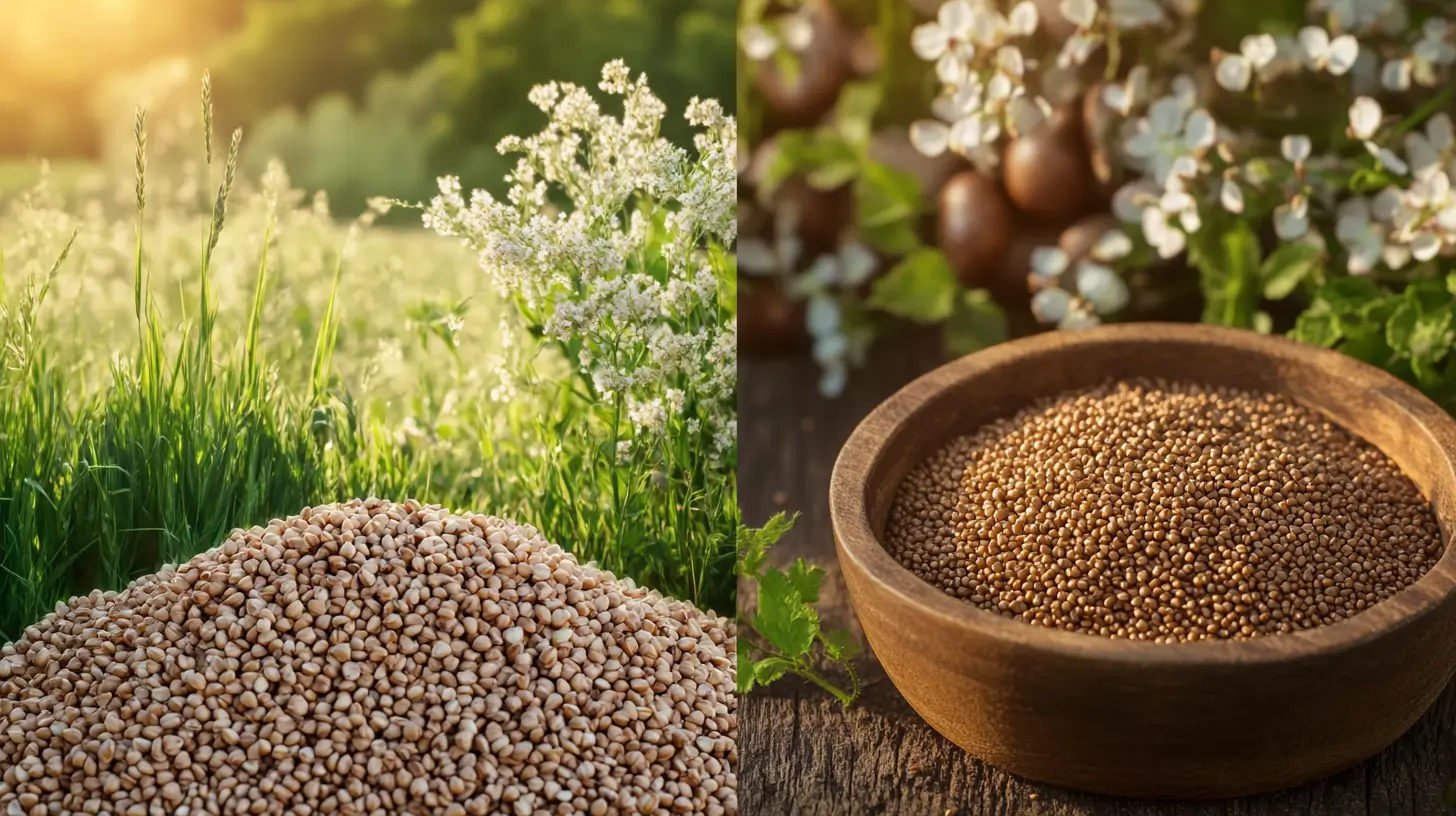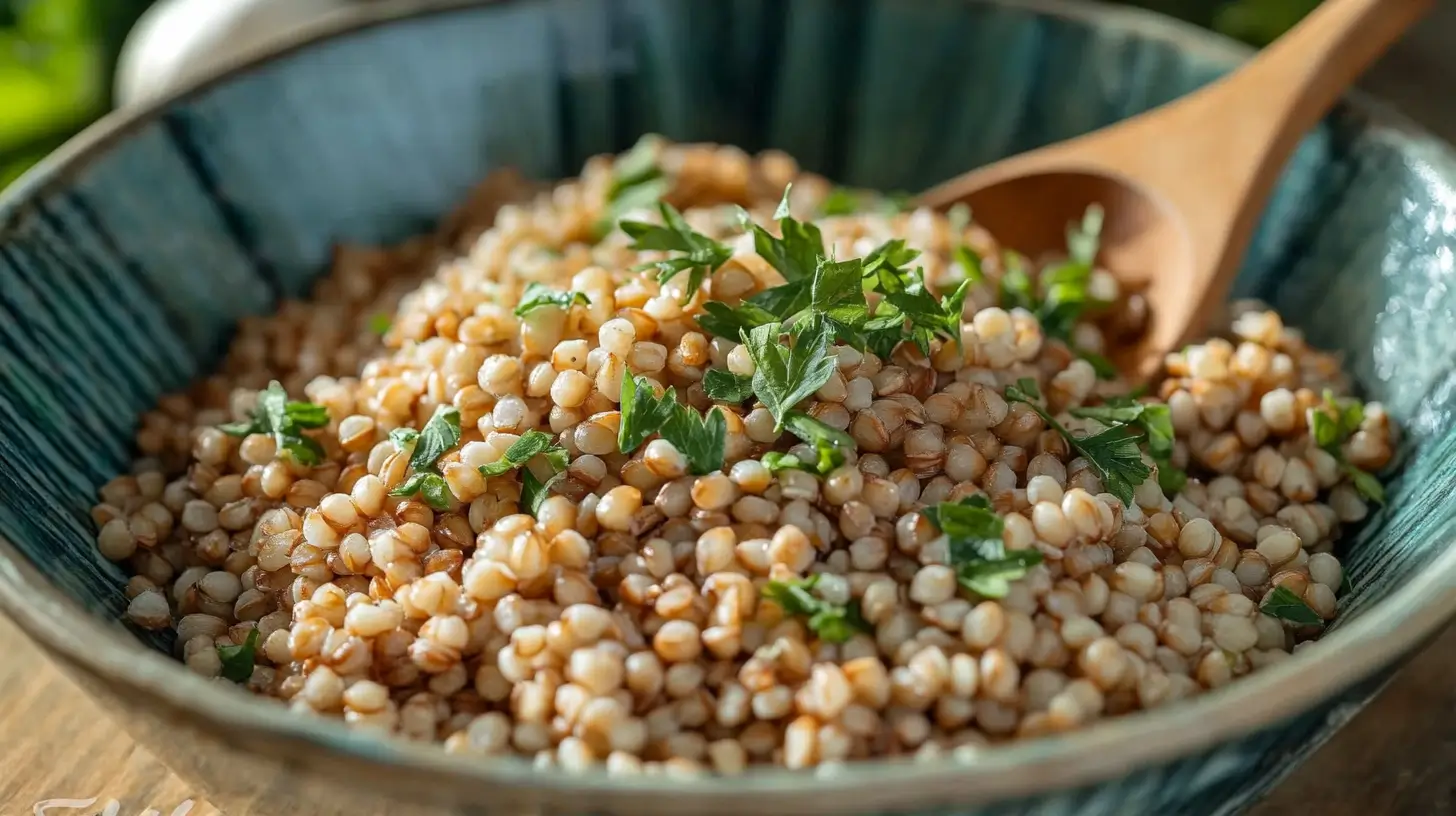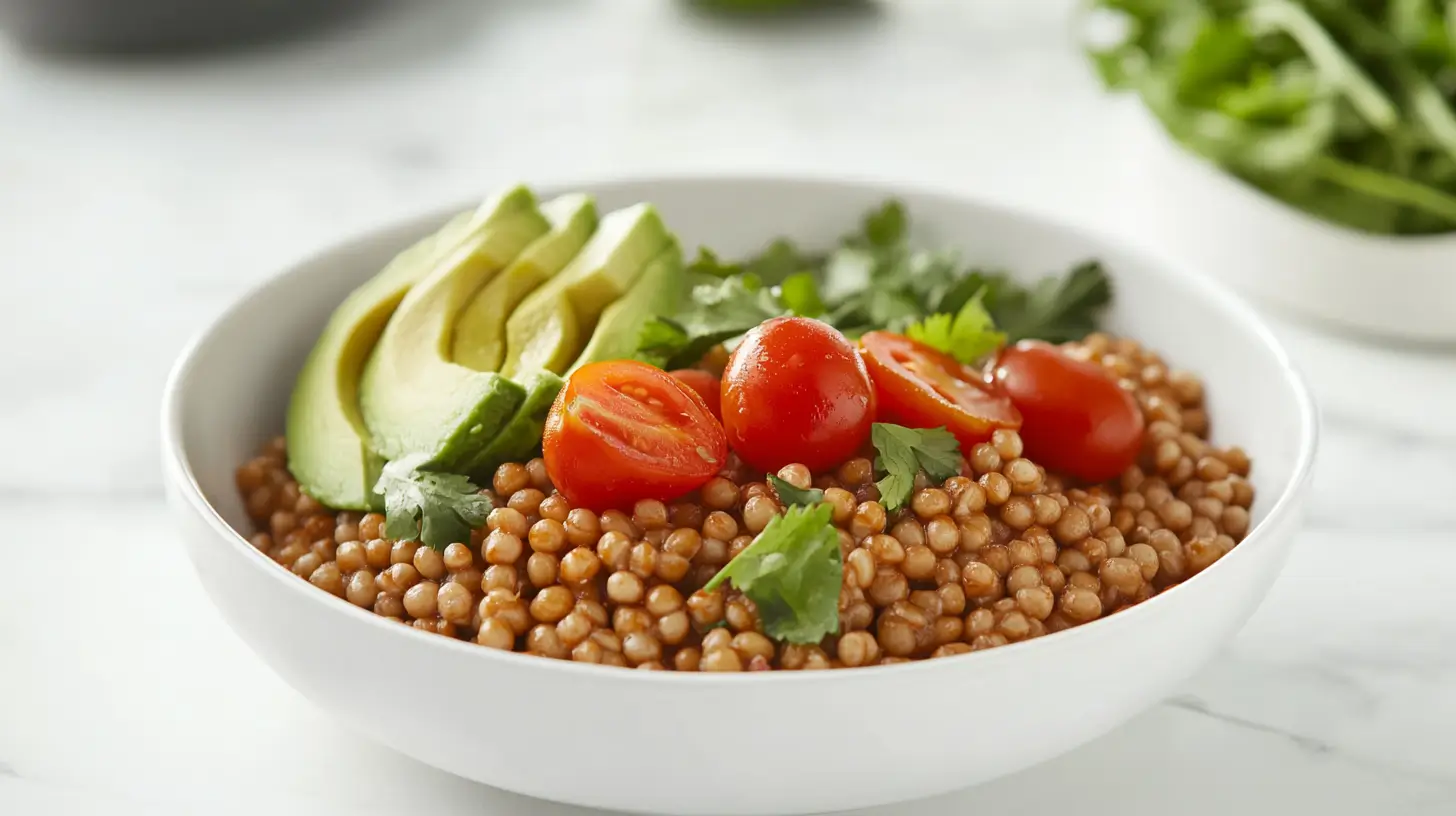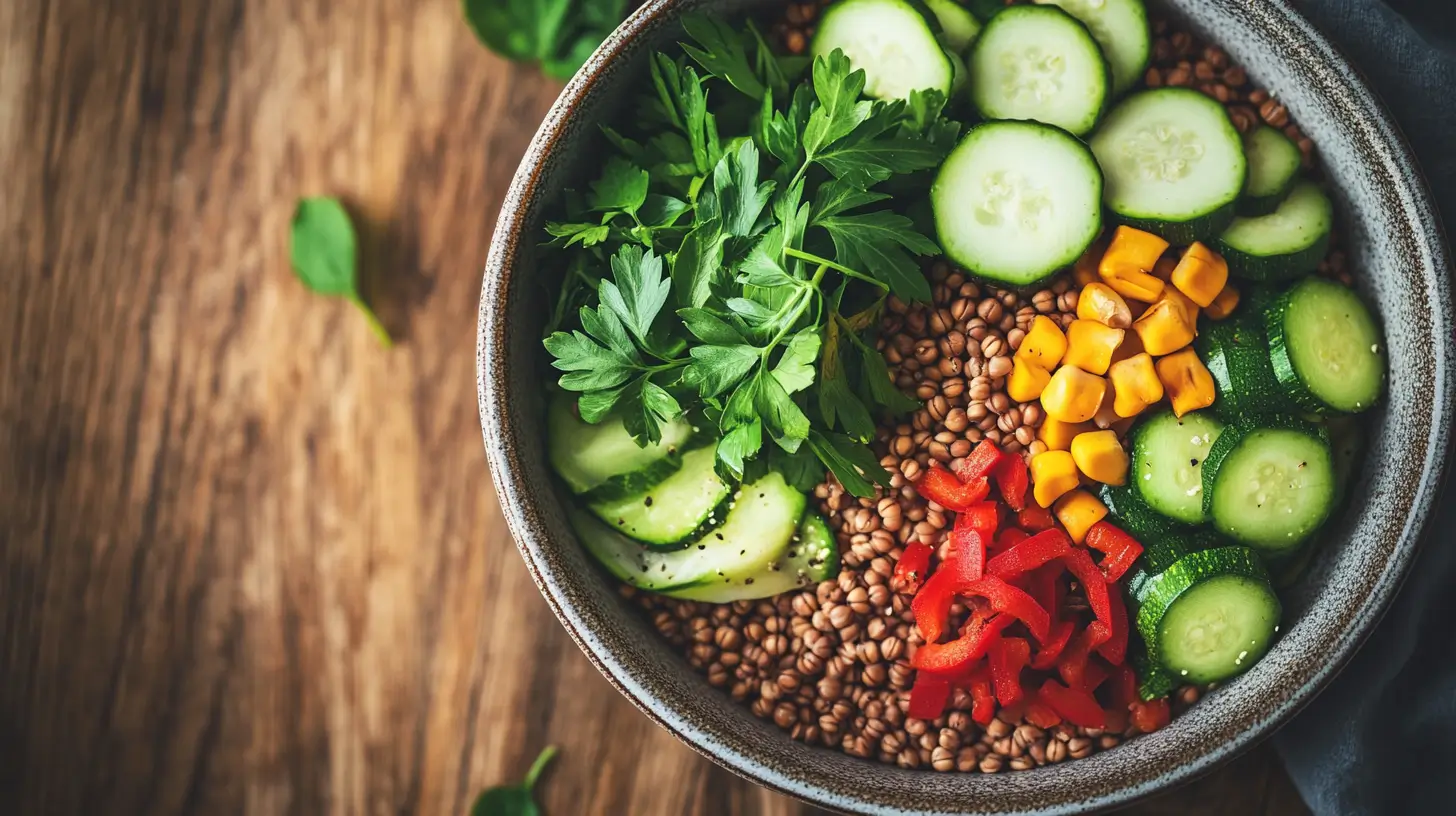Introduction
Buckwheat is a nutrient-rich seed that has been a staple food in many cultures for centuries. Despite its name, buckwheat is not related to wheat but is classified as a pseudocereal, similar to quinoa or amaranth. For those wondering what is the best way to eat buckwheat, its versatility in sweet and savory dishes makes it a popular choice in various cuisines. Packed with essential nutrients and free from gluten, buckwheat is a favorite among those seeking healthier alternatives to traditional grains. The unique nutty flavor and chewy texture make it a distinctive addition to meals, whether as a side dish or the star ingredient.
Understanding what is the best way to eat buckwheat can open a world of culinary possibilities. From breakfast to dinner, this powerhouse ingredient adapts well to a variety of preparations, offering something for every palate.
Nutritional Profile of Buckwheat
Buckwheat is a nutritional powerhouse loaded with vitamins, minerals, and antioxidants. It is an excellent source of plant-based protein, providing all nine essential amino acids, including lysine, which is often lacking in other grains. It’s also high in fiber, promoting digestive health and keeping you full for longer.
Key nutrients found in buckwheat include magnesium, manganese, phosphorus, and B vitamins. The high levels of flavonoids, particularly rutin, contribute to its anti-inflammatory and heart-healthy properties. Knowing what is the best way to eat buckwheat ensures that you reap these nutritional benefits to their fullest, whether you’re consuming it in groat, flour, or noodle form.
Health Benefits of Buckwheat
Why Buckwheat Is High in Essential Nutrients
One of the standout features of buckwheat is its dense nutrient profile. It is particularly beneficial for individuals with specific dietary needs, such as vegans or vegetarians, as it provides a complete protein source. This makes buckwheat an ideal food for muscle repair and overall energy.
The rich magnesium content supports muscle function and cardiovascular health, while fiber aids in regulating blood sugar levels. For those wondering what is the best way to eat buckwheat, choosing minimally processed options like groats or freshly ground flour ensures maximum nutrient retention.
Gluten-Free Grain Alternative
For individuals with gluten intolerance or celiac disease, buckwheat is not only a safe but also a highly nutritious alternative. Moreover, it can easily replace wheat-based products in recipes, providing similar versatility while ensuring there is no compromise on taste or texture.
By understanding what is the best way to eat buckwheat in its gluten-free form, you can enjoy a variety of meals, from hearty pancakes to delectable noodles, without the worry of adverse reactions.
Types of Buckwheat
Whole Buckwheat Groats: What Is the Best Way to Eat Them?
Whole buckwheat groats are the most basic form of this seed, often roasted to enhance their earthy flavor. These are ideal for porridge, salads, and as a rice substitute in dishes. When exploring what is the best way to eat buckwheat, groats are a great place to start due to their versatility and ease of preparation.
- Use groats in soups for added texture.
- Add cooked groats to salads for a hearty base.
- Serve as a side dish to complement proteins.
Buckwheat Flour
Bakers and cooks extensively use buckwheat flour, a finely milled product. They particularly favor it for pancakes, muffins, and bread because its robust flavor shines in these recipes.
- Substitute part of wheat flour with buckwheat for a nuttier flavor in baked goods.
- Combine with other gluten-free flours for better texture.
- Use it in batter for frying to achieve a crispy coating.
Buckwheat Noodles
Buckwheat noodles, or soba, are a popular staple in Japanese cuisine. They are made using buckwheat flour, often blended with wheat for elasticity. When wondering what is the best way to eat buckwheat, soba noodles provide a quick and healthy option for stir-fries, soups, or salads.
- Serve hot with a flavorful broth.
- Toss with a sesame-soy dressing for a refreshing cold dish.
- Pair with stir-fried vegetables for a balanced meal.
Preparing Buckwheat for Consumption
Cleaning and Soaking Buckwheat
Proper preparation is crucial for ensuring buckwheat cooks evenly and tastes its best. Begin by rinsing buckwheat groats under cold water to remove any debris or bitterness. Soaking overnight can reduce cooking time and improve digestibility.
For those exploring what is the best way to eat buckwheat, soaking is particularly beneficial for softening the grains and enhancing nutrient absorption. Once soaked, drain and rinse the groats before cooking.
Cooking Methods: Boiling, Steaming
Cooking buckwheat is simple and quick, making it an excellent choice for busy lifestyles. Boiling and steaming are the most common methods, each bringing out different textures.
- Boil groats for a creamy consistency in porridge.
- Steam for a fluffier texture, perfect for salads or side dishes.
- Use a rice cooker for hands-off preparation.
The Best Cooking Methods for Buckwheat
How to Boil Buckwheat for Perfect Texture
To boil buckwheat, combine one part groats with two parts water or broth in a pot. Bring to a boil, then reduce heat and simmer for 15 minutes. This method is ideal for creating a soft, porridge-like texture that pairs well with both sweet and savory toppings.
Experimenting with seasonings like cinnamon, nutmeg, or savory herbs can elevate your understanding of what is the best way to eat buckwheat. Adjust cooking times based on your desired consistency.
Steaming Techniques: What Is the Best Way to Eat Fluffy Buckwheat?
For fluffier buckwheat, steaming is a fantastic option. Use a steamer basket to cook soaked groats for 20 minutes. This technique ensures the grains remain intact, making it an excellent choice for dishes like pilafs or stir-fries.
When considering what is the best way to eat buckwheat, steaming provides a light and airy texture that complements a wide range of cuisines. Pair with roasted vegetables or protein-rich sides for a balanced meal.

Popular Buckwheat Dishes Worldwide
Buckwheat Pancakes (Blinis): A Global Favorite
Blinis are a traditional Russian dish made with buckwheat flour. These small pancakes are often served with sour cream, caviar, or smoked salmon. They offer a rich and nutty flavor that stands out at any meal.
- Use yeast to create airy blinis.
- Add herbs like dill for a savory twist.
- Serve with sweet toppings like honey or jam for a versatile option.
Soba Noodles: A Japanese Answer to What Is the Best Way to Eat Buckwheat
Soba noodles, made primarily of buckwheat flour, are a cornerstone of Japanese cuisine. These noodles are perfect for quick meals and can be enjoyed hot or cold.
- Toss with a soy-based sauce for a light, refreshing dish.
- Add to soups for a hearty, warming meal.
- Pair with tempura for a classic Japanese combination.
Kasha
Kasha, a dish of roasted buckwheat groats, is popular in Eastern Europe. It is typically cooked with onions, mushrooms, or broth to create a flavorful side dish or main course.
- Combine with caramelized onions for a simple preparation.
- Mix with sautéed mushrooms for an earthy flavor profile.
- Serve alongside roasted meats or vegetables.
Pairing Buckwheat with Other Foods
Ideal Protein Pairings: What Is the Best Way to Eat Buckwheat with Proteins?
Buckwheat is a versatile ingredient, and pairing it with complementary proteins can significantly enhance its nutritional value. While buckwheat itself is a complete protein, combining it with other sources like beans, lentils, or dairy can further boost its amino acid profile.
- Add black beans or chickpeas to buckwheat salads for a protein-packed meal.
- Serve buckwheat alongside eggs or Greek yogurt for a balanced breakfast.
- Combine with tofu or tempeh in stir-fries for a plant-based protein boost.
Understanding what is the best way to eat buckwheat with other protein-rich foods allows you to craft meals that are not only delicious but also highly nutritious.
Adding Fruits and Vegetables
Pairing buckwheat with fresh fruits and vegetables is a surefire way to create vibrant, healthful dishes. The nutty flavor of buckwheat complements both sweet and savory produce.
- Toss cooked buckwheat with spinach, cherry tomatoes, and a lemon vinaigrette for a refreshing salad.
- Add roasted sweet potatoes, Brussels sprouts, or bell peppers for a hearty side dish.
- Mix with berries, banana slices, and a drizzle of honey for a wholesome breakfast bowl.
When considering what is the best way to eat buckwheat, these colorful additions enhance both flavor and nutrition.
Creative Recipes with Buckwheat
Buckwheat Breakfast Bowl: A Healthy Start to the Day
Start your day with a nutritious buckwheat breakfast bowl. Cooked groats serve as a hearty base for a variety of toppings, creating a dish that’s both satisfying and customizable.
- Use almond milk or coconut milk for a creamy texture.
- Top with sliced bananas, chia seeds, and a sprinkle of cinnamon.
- For a savory option, add sautéed greens, poached eggs, and avocado slices.
Exploring what is the best way to eat buckwheat for breakfast provides a versatile and energizing start to the day.
Savory Buckwheat Salads: What Is the Best Way to Eat Buckwheat in a Salad?
Buckwheat shines in salads, offering a chewy texture that holds up well with dressings. Combine it with fresh vegetables, herbs, and a tangy dressing for a meal that’s both light and filling.
- Toss cooked groats with cucumber, red onion, and feta for a Mediterranean twist.
- Add arugula, roasted beets, and goat cheese for a gourmet touch.
- Pair with grilled chicken or tofu to transform it into a complete meal.
Learning what is the best way to eat buckwheat in salads unlocks endless possibilities for creative and healthy meals.
Buckwheat Stir-Fry: Quick and Nutritious Meals
For a quick and flavorful dish, use buckwheat as the base for a stir-fry. Its robust flavor pairs well with bold sauces and stir-fried vegetables.
- Sauté groats with garlic, ginger, and soy sauce for an Asian-inspired dish.
- Add broccoli, carrots, and snap peas for a colorful medley.
- Top with sesame seeds and a drizzle of sesame oil for added richness.
By mastering what is the best way to eat buckwheat in stir-fries, you can create meals that are both fast and flavorful.
Buckwheat for Weight Management
High Satiety Index
Buckwheat is a great choice for those looking to manage their weight, thanks to its high satiety index. The fiber content in buckwheat keeps you feeling full for longer, reducing the likelihood of overeating.
Including buckwheat in meals like porridge, salads, or soups provides a satisfying base that can curb cravings throughout the day. For anyone exploring what is the best way to eat buckwheat for weight loss, portioned servings paired with vegetables and lean proteins are ideal.
Calorie Count and Portion Control
While buckwheat is nutrient-dense, it’s essential to manage portion sizes for effective weight control. A serving size of about half a cup of cooked groats contains roughly 85 calories, making it easy to incorporate into calorie-conscious diets.
- Measure portions to avoid overeating.
- Use buckwheat as a filler in soups or stews to reduce calorie density.
- Mix with low-calorie vegetables for a balanced meal.
Knowing what is the best way to eat buckwheat in appropriate portions supports both weight management and overall health.
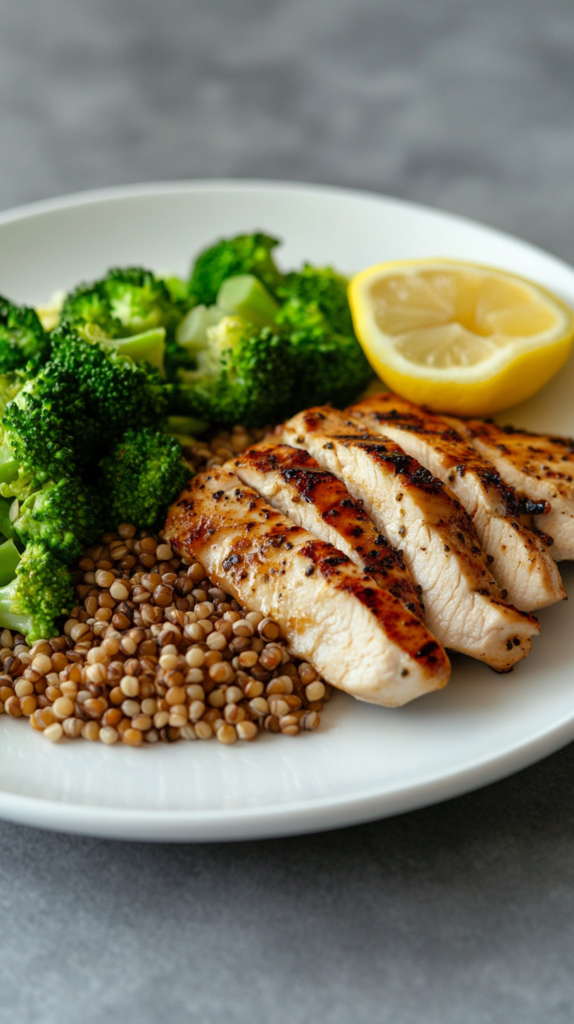
Buckwheat for Specific Diets
Gluten-Free Diets: Why Buckwheat Is the Perfect Grain
For individuals with celiac disease or gluten sensitivity, buckwheat is an excellent choice. It’s naturally gluten-free and can replace wheat-based ingredients in many recipes.
- Use buckwheat flour to make gluten-free pancakes or bread.
- Substitute pasta with buckwheat noodles in your favorite dishes.
- Replace rice with buckwheat groats in casseroles or pilafs.
Understanding what is the best way to eat buckwheat in a gluten-free context opens up a world of safe and delicious options.
Vegan and Vegetarian Options
Buckwheat is a plant-based powerhouse that fits seamlessly into vegan and vegetarian diets. Its protein content and versatility make it a staple for those seeking meatless meals.
- Create vegan burgers using cooked buckwheat and black beans.
- Use buckwheat flour for egg-free crepes or wraps.
- Add groats to vegetable soups or stews for added texture and nutrition.
By exploring what is the best way to eat buckwheat in vegan and vegetarian recipes, you can enjoy meals that are both satisfying and ethical.
The Sustainability of Buckwheat
Low Environmental Impact
Buckwheat is an eco-friendly crop that requires minimal resources to grow. It thrives in poor soil conditions, needs little water, and does not rely on chemical fertilizers or pesticides. Choosing buckwheat supports sustainable farming practices.
When considering what is the best way to eat buckwheat, its low environmental footprint makes it an ethical choice for eco-conscious consumers.
Organic and Local Sourcing
Opting for organic and locally sourced buckwheat further enhances its sustainability. Organic buckwheat is grown without harmful chemicals, while local sourcing reduces the carbon footprint associated with transportation.
- Purchase from farmers’ markets or community-supported agriculture programs.
- Choose brands that prioritize ethical and sustainable farming.
- Store buckwheat properly to reduce food waste.
By incorporating what is the best way to eat buckwheat into your meals, you contribute to a more sustainable food system.
FAQS
What Is the Healthiest Way to Eat Buckwheat?
The healthiest way to eat buckwheat involves minimal processing and preparation methods that retain its nutrients. Cooking whole buckwheat groats is one of the best approaches, as they are unrefined and rich in fiber, protein, and essential minerals.
- Boil or steam groats for a light and fluffy texture, ideal for salads or side dishes.
- Pair buckwheat with vegetables and lean proteins to create a balanced and nutrient-dense meal.
- Use buckwheat flour for making gluten-free pancakes or bread, but choose recipes with minimal added sugar and fat.
Avoid overcooking buckwheat, as this can degrade some of its nutritional value. By soaking groats beforehand, you can improve digestibility and maximize nutrient absorption.
How Is Buckwheat Traditionally Eaten?
Traditionally, buckwheat has been a staple food in many cultures, enjoyed in a variety of ways:
- Eastern Europe: Buckwheat groats, known as kasha, are roasted and cooked with water or broth. Often, it is served as a side dish or mixed with mushrooms, onions, or meats.
- Japan: Buckwheat flour is used to make soba noodles, a popular dish served either cold with a dipping sauce or hot in a broth.
- France: Buckwheat flour is used for making galettes, savory crepes filled with ingredients like cheese, ham, or vegetables.
- India: Buckwheat flour is used during fasting periods to prepare rotis (flatbreads) or puris (fried bread).
In each tradition, buckwheat is often paired with local ingredients that complement its nutty flavor and enhance its nutritional profile.
How Do Russians Eat Buckwheat?
In Russian cuisine, buckwheat is a beloved staple known as grechka. It is commonly eaten in a simple yet flavorful manner:
- As Kasha: The most traditional preparation involves roasting and then boiling buckwheat groats with water or broth until soft. It is served as a side dish or mixed with butter for a richer taste.
- With Milk: Russians often enjoy buckwheat as a breakfast dish, similar to porridge. Cooked groats are served with warm milk, sugar, or honey.
- With Onions and Mushrooms: Another popular preparation involves sautéing onions and mushrooms, then mixing them with cooked buckwheat. This combination is often served as a hearty vegetarian meal or side dish.
- With Meat or Fish: Buckwheat is frequently paired with stews, sausages, or fish dishes, making it a versatile addition to Russian meals.
The emphasis in Russian cuisine is on simplicity and allowing buckwheat’s nutty flavor to shine through.
What Happens If You Don’t Rinse Buckwheat?
Failing to rinse buckwheat before cooking can impact its flavor and texture:
- Bitter Taste: Unrinsed buckwheat may retain a natural bitterness due to a compound found in the husk. Rinsing removes this bitterness, resulting in a milder and more pleasant taste.
- Residue and Impurities: Skipping the rinse may leave behind dust, dirt, or debris from processing, which can affect the cleanliness of your dish.
- Clumping During Cooking: Without rinsing, the starchy coating on buckwheat groats can cause them to stick together or form a gummy texture when cooked.
For the best results, always rinse buckwheat groats under cold water until the water runs clear. This simple step improves both the flavor and the overall quality of your dish.
Conclusion
Recap of the Best Ways to Eat Buckwheat
Buckwheat is a versatile and nutritious ingredient that can be enjoyed in countless ways. From hearty breakfast bowls to savory stir-fries, this superfood adapts to every meal of the day. Whether you’re boiling, steaming, or incorporating it into baked goods, understanding what is the best way to eat buckwheat ensures you maximize its flavor and health benefits.
Encouragement to Try It
Now that you’ve explored what is the best way to eat buckwheat, it’s time to get creative in the kitchen. Whether you’re looking to improve your diet, embrace a gluten-free lifestyle, or support sustainable food practices, buckwheat is a delicious and wholesome choice. Start experimenting with recipes today and discover how this ancient grain can transform your meals!


